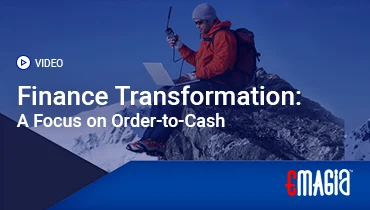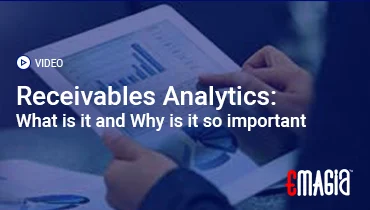1. Introduction to POS Transactions
Point of Sale (POS) transactions represent the exchange of payment between a customer and a merchant at the moment of purchase. Understanding the different types of POS transactions is critical for improving financial efficiency, enhancing customer experiences, and choosing the right technology for your business model.
2. Core Categories of POS Transactions
2.1 In‑Person / Card‑Present Transactions
These include transactions where the card is physically present at the POS terminal, such as swiping, inserting, or tapping. Types:
- Magstripe: Traditional swipe method using magnetic strip.
- EMV Chip: Offers secure, encrypted transactions with dynamic codes.
- Contactless/NFC: Quick and safe contactless payments using a card or mobile wallet.
2.2 Card‑Not‑Present (CNP) / Online Transactions
Used in e-commerce or remote payments, where the cardholder is not physically present. Includes AVS, CVV checks, 3-D Secure, and more for fraud protection.
2.3 Cash Transactions
Cash exchanges at the POS are immediate and require no third-party authorization. Still common in some sectors but harder to track at scale.
2.4 Debit Card/EFTPOS Transactions
Customers pay using their debit cards, often verified via PIN entry. EFTPOS systems are cost-effective with lower processing fees.
2.5 ACH / Bank Transfer Payments at POS
Bank account-based payments for recurring or large B2B transactions. Settled via ACH networks.
2.6 Digital Wallet & Mobile Payments
Popular options like Apple Pay and Google Pay offer quick, encrypted, and contactless experiences using smartphones and wearables.
2.7 Split-Tender Transactions
Customers use two or more payment methods in one sale, such as combining gift cards with cash or credit.
2.8 Gift Card & Loyalty Point Transactions
POS systems allow redemption of store-issued gift cards or accumulated loyalty points as payment.
2.9 Pre‑Authorization & Completion
Common in hotels or rentals, these transactions temporarily hold funds on a customer’s card until final approval.
2.10 Refunds, Returns, Adjustments & Reversals
These reverse the flow of a transaction—used during product returns, cancellations, or price adjustments.
2.11 Cash Advance at POS
Allows customers to receive cash through a credit card at the register—usually with higher fees.
3. POS System Structures that Handle Transaction Types
3.1 On‑Site Terminal POS Systems
Traditional hardware and software installed at physical locations. Offers speed and stability but limited flexibility.
3.2 Cloud‑Based Terminal POS Systems
Connect to the internet for real-time data, software updates, and off-site monitoring.
3.3 Mobile POS (mPOS)
Tablets and smartphones with card readers. Ideal for mobile businesses and events.
3.4 Online POS Systems
Operate via web browsers; require minimal hardware. Suitable for remote and hybrid models.
3.5 Self‑Service Kiosks
Allow customers to complete transactions without cashier intervention—common in QSRs and retail.
3.6 Virtual POS (vPOS)
Software-only solutions enabling online card payments without physical terminals.
4. POS Transaction Processing Workflow
- Transaction Initiation
- Payment Data Entry
- Authorization Request to Issuer
- Authentication via PIN/CVV/3D Secure
- Approval or Decline Response
- Batch Settlement
- Reconciliation and Reporting
5. Security & Compliance in POS Transactions
Payment systems must comply with PCI DSS standards. Security measures include tokenization, EMV encryption, and AI-driven fraud detection—especially for online and contactless payments.
6. Fees & Costs Across Transaction Types
Transaction types affect fees. Processing fees for credit cards tend to be higher compared to debit cards or ACH transfers. Additional expenses may arise from chargebacks, foreign exchange, and upkeep of payment terminals.
7. Emerging Trends in POS Transactions
- AI-powered analytics for real-time personalization.
- Integration with loyalty and CRM systems.
- Blockchain and cryptocurrency acceptance.
- Cashier-less experiences using IoT and sensor tech.
8. Choosing the Right POS Setup by Transaction Type
Retail, hospitality, mobile vendors, and B2B all require tailored POS setups. Consider mobility, transaction type volume, customer behavior, and integration capabilities.
9. How Emagia Empowers Smart POS Transaction Management
Emagia offers a unified platform for managing diverse POS transactions across retail, e-commerce, and B2B. Its key benefits include:
- Support for all transaction types: EMV, NFC, ACH, CNP, split-tender, and more.
- Advanced analytics for transaction insights and cost optimization.
- Advanced fraud prevention powered by artificial intelligence, along with security protocols that align with PCI standards.
- Real-time reconciliation and seamless ERP integration.
- Integrated features for managing loyalty programs, invoicing, and enhancing customer interactions.
With Emagia, businesses can elevate their financial operations, ensure compliance, and drive better customer experiences.
10. Frequently Asked Questions
What are the most common types of POS transactions?
In-person card payments, online transactions, mobile payments, and refunds are among the most common.
What is a card-not-present transaction?
These are transactions where the cardholder isn’t physically present, typically occurring through online platforms or telephone orders.
What is split-tender payment?
A method where two or more forms of payment are used in a single transaction.
How do POS refunds work?
The original payment method is reversed, and the amount is credited back to the customer.
What is pre-authorization at POS?
A temporary hold is placed on funds to guarantee payment, typically used in rentals or hospitality.
How secure is contactless payment?
It is highly secure due to tokenization and encrypted transaction data.



